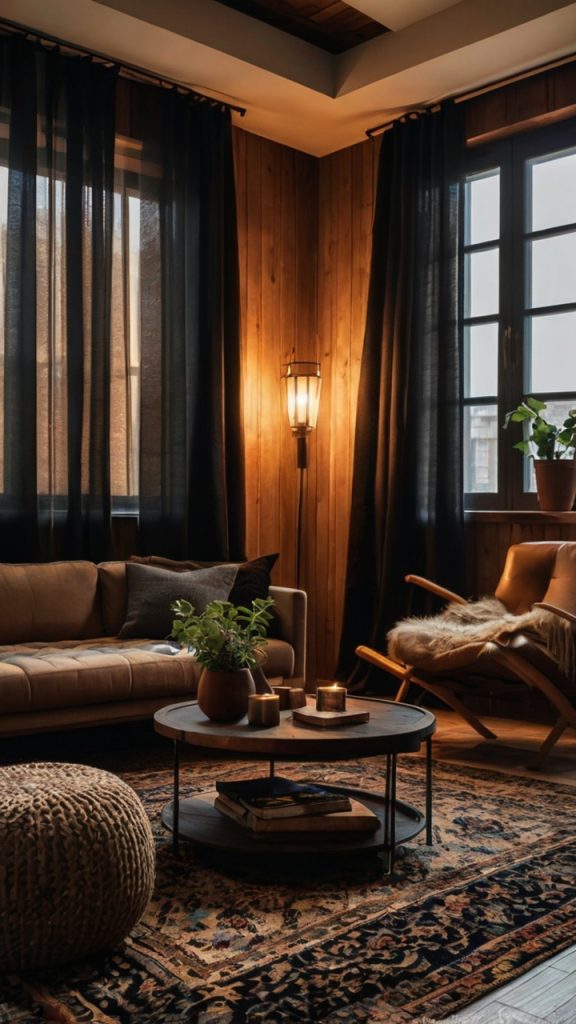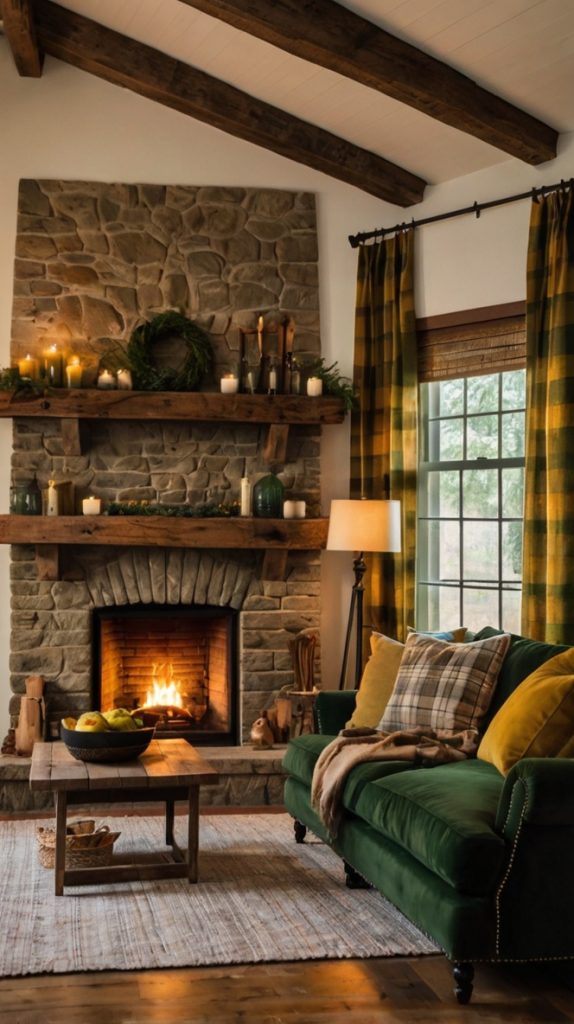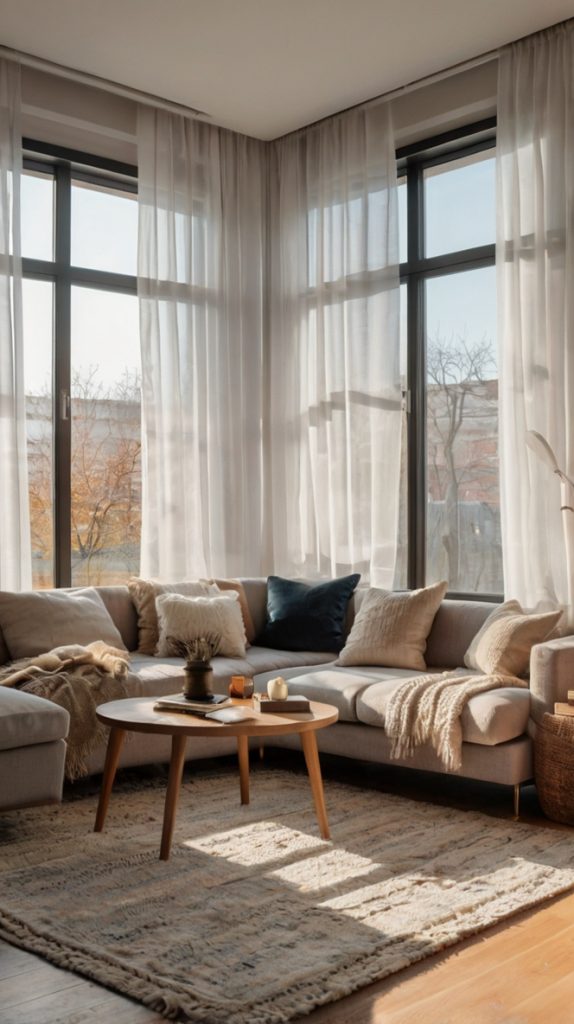10 Modern Ceiling Designs to Elevate Your Interior Space
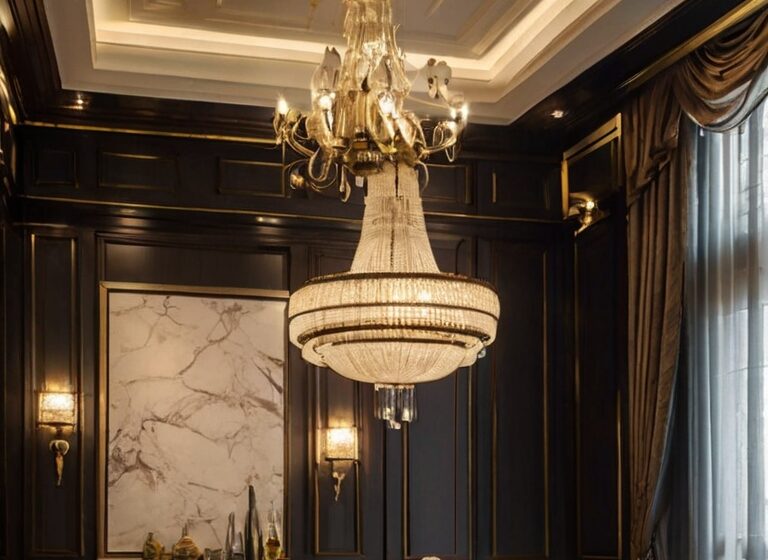
Modern ceiling design is more than just a functional element of a room; it has evolved into a statement piece that can dramatically alter the aesthetic and atmosphere of any interior space.
As homeowners and designers increasingly seek ways to create unique and visually appealing environments, the ceiling has emerged as a canvas for creativity.
This blog post explores 10 modern ceiling designs that can transform your living space, providing both functional benefits and aesthetic appeal.
1. Floating Ceilings
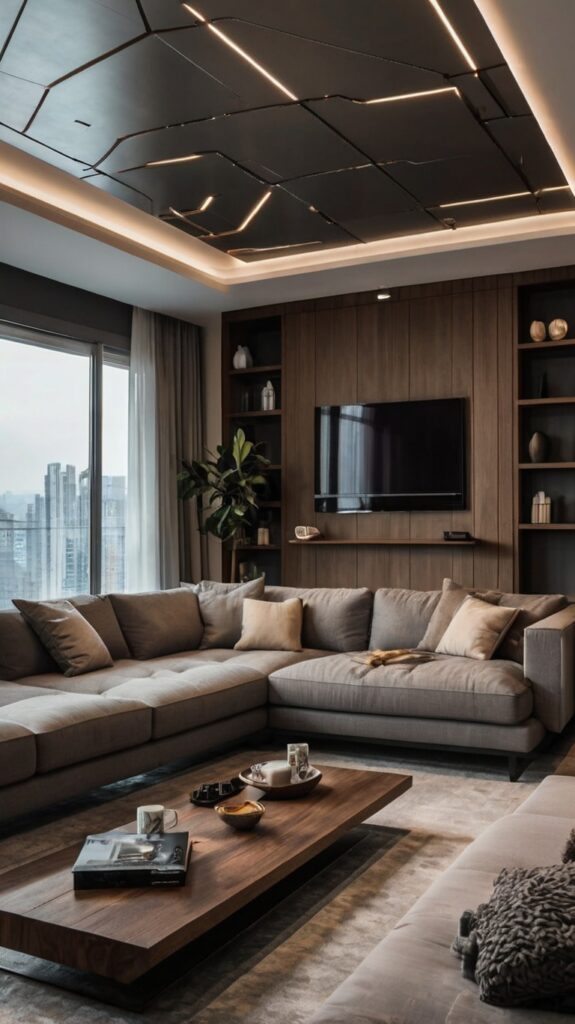
What Are Floating Ceilings?
Floating ceilings, also known as drop ceilings or suspended ceilings, are a popular choice in modern interior design. They consist of a secondary ceiling that hangs below the structural ceiling, creating a “floating” effect. This design can be used to conceal pipes, wires, and other unsightly elements, providing a clean and streamlined look.
Benefits of Floating Ceilings
- Aesthetic Appeal: Floating ceilings add a modern and sophisticated touch to any room.
- Acoustic Benefits: They can improve sound insulation, making them ideal for home theaters, offices, and bedrooms.
- Flexibility: Floating ceilings can be easily customized with different materials, such as wood, metal, or fabric, to match the room’s decor.
Design Ideas
- Wood Planks: Use reclaimed wood planks to create a warm and natural look.
- Metal Panels: Opt for sleek metal panels for a more industrial and contemporary feel.
- Lighting Integration: Incorporate LED strips or recessed lights to enhance the visual impact and functionality of the ceiling.
Also Read: The Art of Japandi Kitchens: Blending Japanese Minimalism with Scandinavian
2. Exposed Beam Ceilings
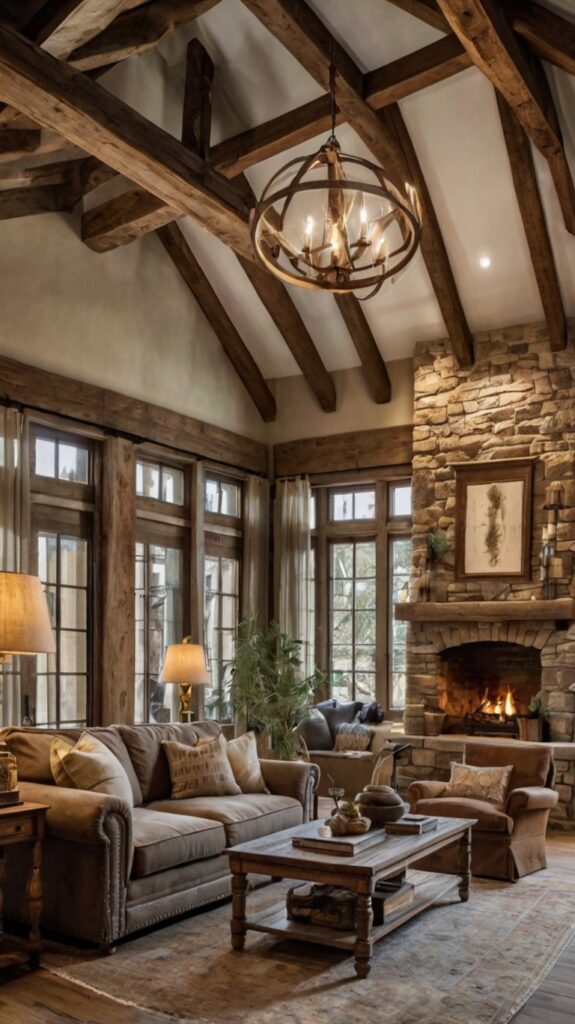
What Are Exposed Beam Ceilings?
Exposed beam ceilings reveal the structural elements of the room, such as wooden or steel beams, adding a raw and authentic aesthetic. This design is particularly popular in industrial and rustic styles, but it can also be adapted to modern and minimalist interiors.
Benefits of Exposed Beam Ceilings
- Visual Interest: Exposed beams create a focal point and add depth to the room.
- Structural Integrity: They can highlight the building’s architecture and engineering.
- Versatility: Exposed beams can be painted, stained, or left in their natural state to suit different design preferences.
Design Ideas
- Natural Wood: Leave the beams in their natural state to emphasize the organic and timeless beauty of wood.
- Contrasting Colors: Paint the beams a contrasting color to make them stand out against the ceiling.
- Lighting: Use pendant lights or spotlights to highlight the beams and create a dramatic effect.
3. Coffered Ceilings
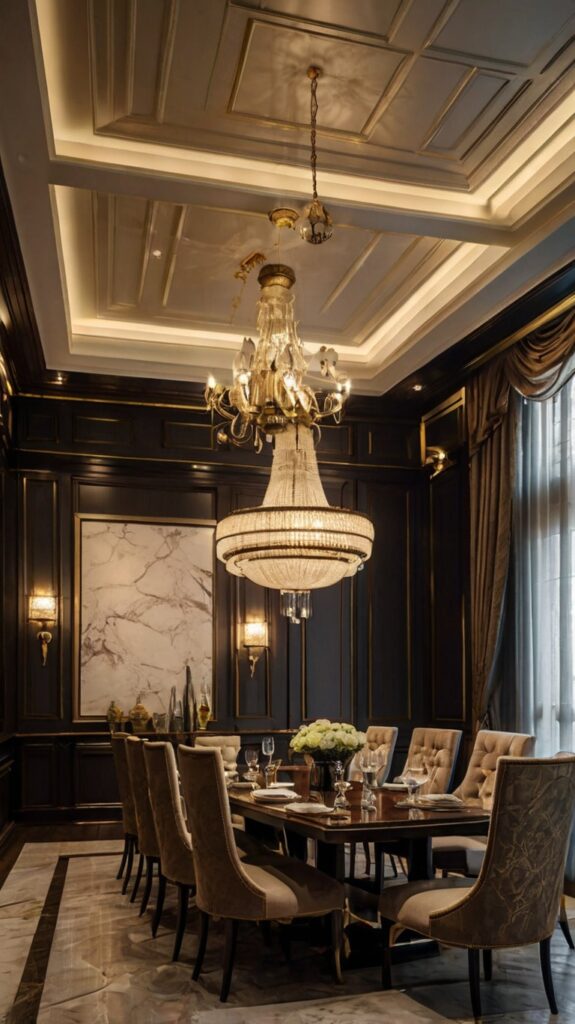
What Are Coffered Ceilings?
Coffered ceilings feature a grid of recessed panels, creating a pattern of squares or rectangles. This design has been used for centuries and is known for its elegance and sophistication. Modern coffered ceilings can be adapted to fit a variety of styles, from traditional to contemporary.
Benefits of Coffered Ceilings
- Aesthetic Elegance: Coffered ceilings add a touch of luxury and refinement to any room.
- Acoustic Benefits: The recessed panels can help to absorb sound, making them ideal for living rooms and dining areas.
- Visual Interest: The grid pattern creates a visually appealing texture that can enhance the room’s overall design.
Design Ideas
- Painted Panels: Paint the recessed panels a different color to create a subtle contrast.
- Wood and Metal: Combine wood and metal elements to create a unique and modern look.
- Lighting: Install recessed lights or pendant lights within the coffered panels to add a layer of ambient lighting.
4. Vaulted Ceilings
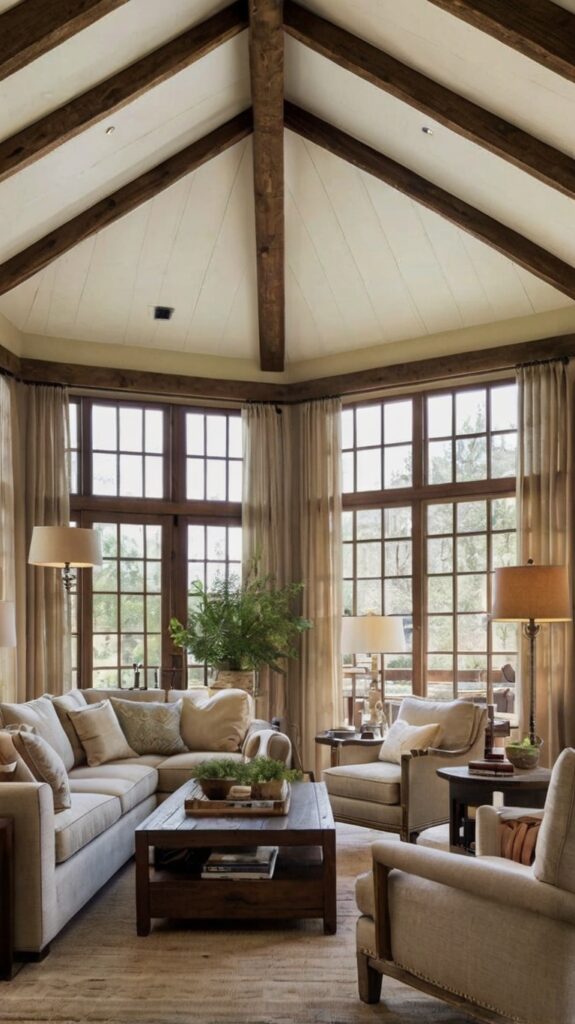
What Are Vaulted Ceilings?
Vaulted ceilings feature a high, sloping or arched design that can dramatically increase the perceived height of a room. They are often used in large spaces, such as great rooms, living rooms, and foyers, to create a sense of openness and grandeur.
Benefits of Vaulted Ceilings
- Visual Impact: Vaulted ceilings make a bold and dramatic statement, making any room feel more spacious and airy.
- Natural Light: The height of the ceiling allows for larger windows, which can bring in more natural light.
- Ventilation: The high ceilings can improve air circulation, making the room more comfortable.
Design Ideas
- Exposed Wood: Use exposed wooden beams or rafters to add warmth and texture.
- Window Placement: Strategically place windows to maximize natural light and create a connection with the outdoors.
- Lighting: Use chandeliers or pendant lights to highlight the height and beauty of the ceiling.
Also Read: 15 Olive Green Bedroom Ideas for a Stylish and Serene
5. Drop Ceilings
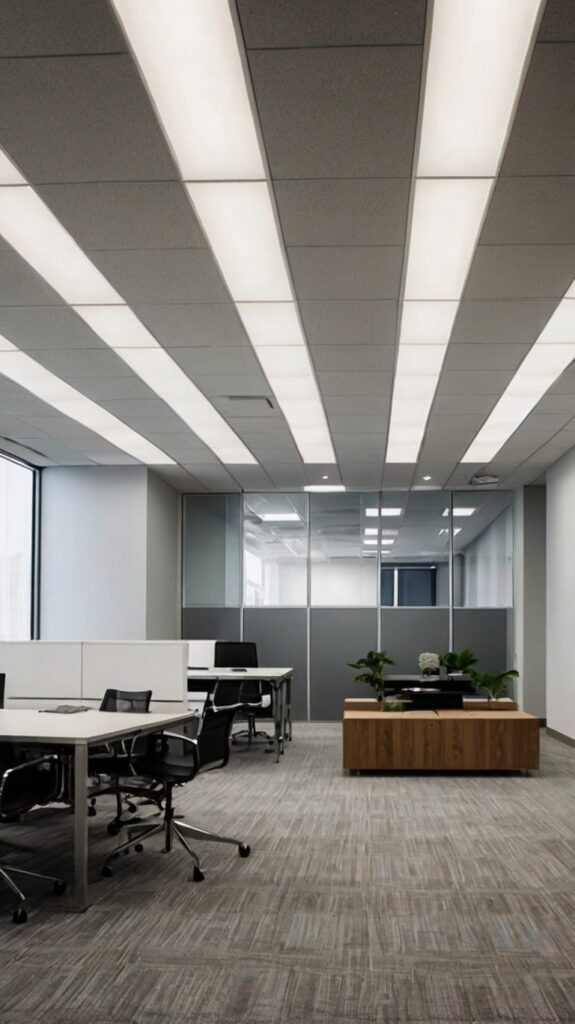
What Are Drop Ceilings?
Drop ceilings, also known as suspended ceilings, are installed below the structural ceiling, creating a lower, more accessible surface. They are commonly used in commercial spaces but can also be adapted for residential use, particularly in areas where HVAC systems or other utilities need to be hidden.
Benefits of Drop Ceilings
- Concealment: Drop ceilings can hide pipes, wires, and HVAC systems, creating a clean and uncluttered look.
- Ease of Maintenance: Access panels in drop ceilings make it easy to perform maintenance and repairs.
- Acoustic Benefits: They can help to reduce noise and improve sound insulation.
Design Ideas
- Tile Options: Choose from a variety of tile materials, such as acoustic tiles, metal tiles, or wood tiles, to match the room’s decor.
- Lighting: Integrate recessed lights or LED strips to enhance the ceiling’s functionality and visual appeal.
- Color and Texture: Use different colors and textures to create a visually interesting ceiling design.
6. Tray Ceilings
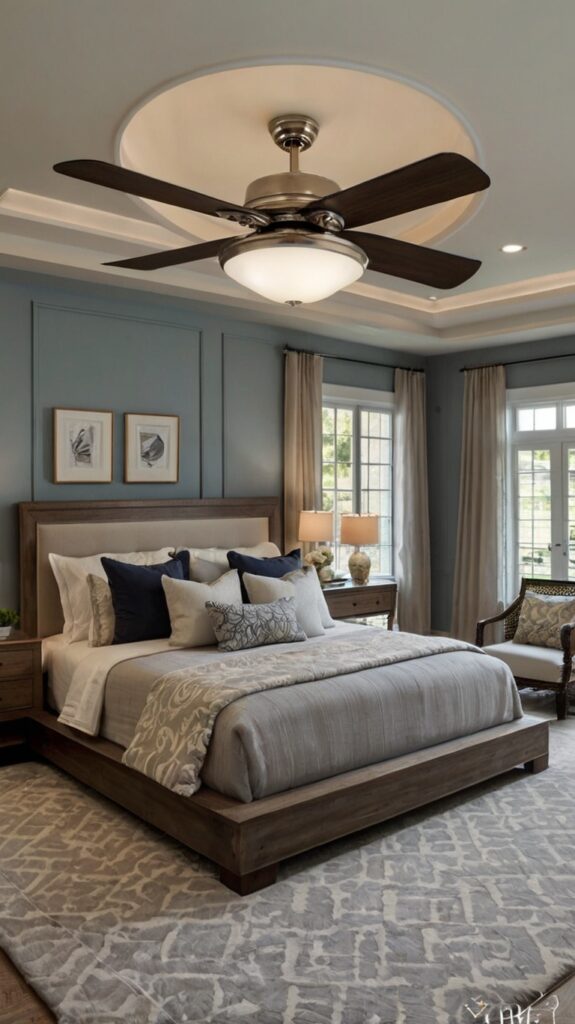
What Are Tray Ceilings?
Tray ceilings feature a raised center section, creating a step-like effect that adds depth and dimension to the room. This design is often used in bedrooms, living rooms, and dining areas to create a sense of height and elegance.
Benefits of Tray Ceilings
- Aesthetic Appeal: Tray ceilings add a touch of luxury and sophistication to any room.
- Visual Height: The raised center section can make the room feel taller and more spacious.
- Lighting: The stepped design provides an ideal location for recessed lights or pendant lights.
Design Ideas
- Painted Edges: Paint the edges of the tray a contrasting color to create a dramatic effect.
- Wood and Stone: Combine wood and stone elements to create a natural and organic look.
- Lighting: Use layered lighting, such as recessed lights and pendant lights, to enhance the ceiling’s visual impact.
7. Beamed Ceilings
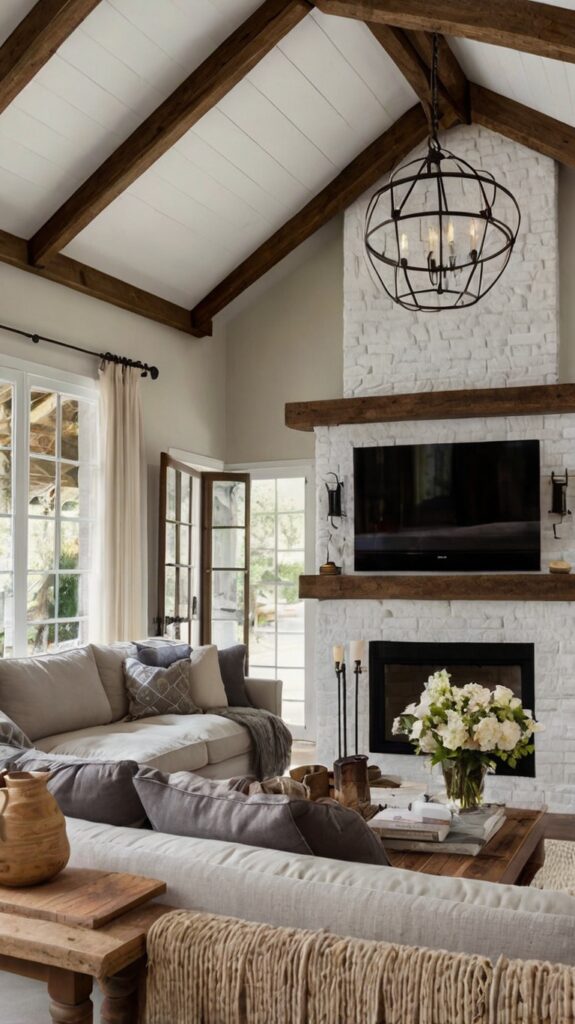
What Are Beamed Ceilings?
Beamed ceilings feature exposed beams that run across the ceiling, creating a grid-like pattern. This design can be used to add a rustic or industrial touch to a room, but it can also be adapted to fit a more modern and minimalist aesthetic.
Benefits of Beamed Ceilings
- Visual Interest: Beams create a focal point and add texture to the ceiling.
- Structural Integrity: They can highlight the building’s architecture and engineering.
- Versatility: Beams can be painted, stained, or left in their natural state to suit different design preferences.
Design Ideas
- Natural Wood: Leave the beams in their natural state to emphasize the organic and timeless beauty of wood.
- Contrasting Colors: Paint the beams a contrasting color to make them stand out against the ceiling.
- Lighting: Use pendant lights or spotlights to highlight the beams and create a dramatic effect.
8. Cathedral Ceilings
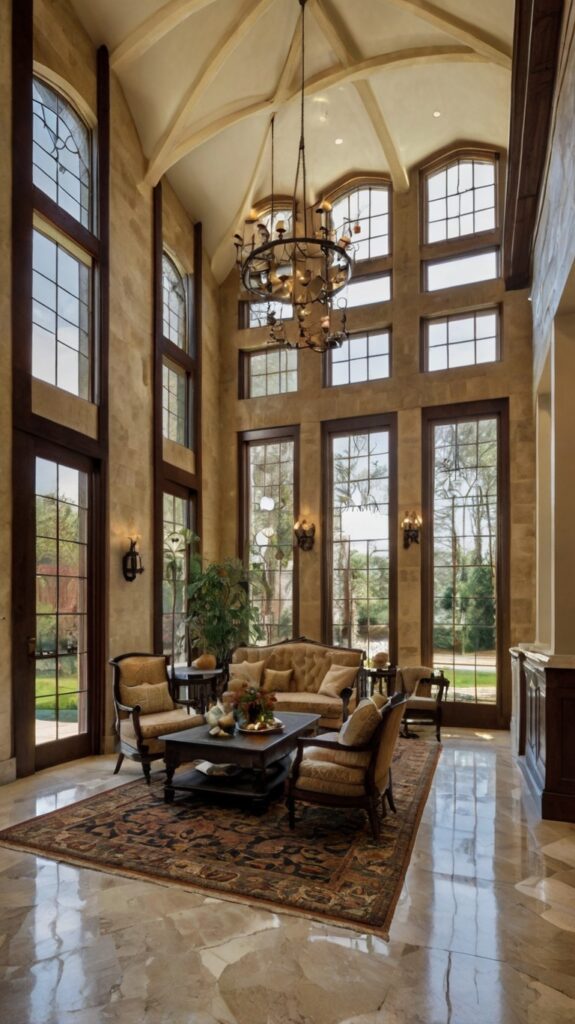
What Are Cathedral Ceilings?
Cathedral ceilings feature a high, sloping design that follows the roof’s pitch, creating a dramatic and spacious feel. They are often used in large rooms, such as great rooms, living rooms, and foyers, to create a sense of grandeur and openness.
Benefits of Cathedral Ceilings
- Visual Impact: Cathedral ceilings make a bold and dramatic statement, making any room feel more spacious and airy.
- Natural Light: The height of the ceiling allows for larger windows, which can bring in more natural light.
- Ventilation: The high ceilings can improve air circulation, making the room more comfortable.
Design Ideas
- Exposed Wood: Use exposed wooden beams or rafters to add warmth and texture.
- Window Placement: Strategically place windows to maximize natural light and create a connection with the outdoors.
- Lighting: Use chandeliers or pendant lights to highlight the height and beauty of the ceiling.
Also Read: 10 Interior Design Living Room Ideas to Transform Your Space
9. Geometric Ceilings
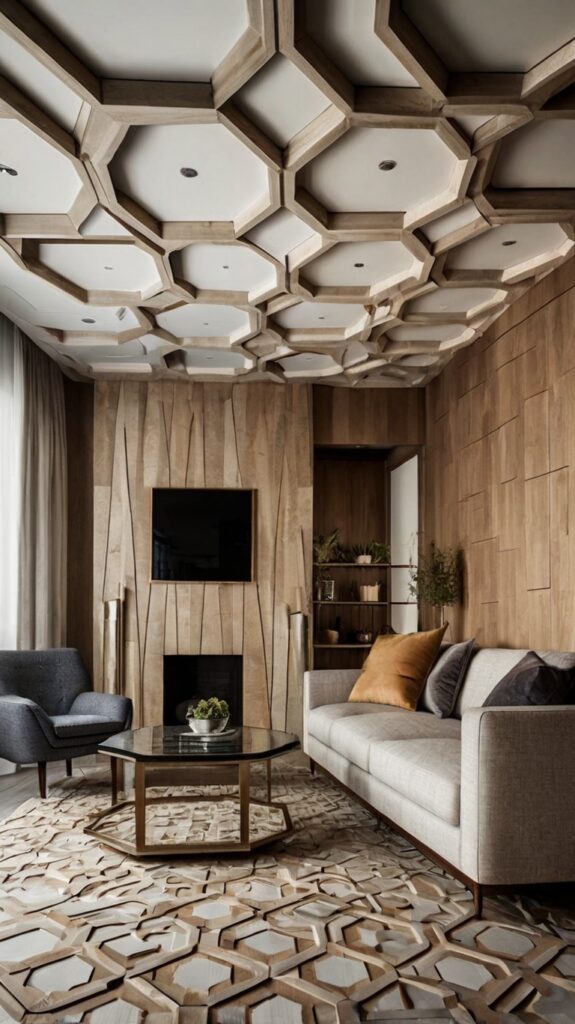
What Are Geometric Ceilings?
Geometric ceilings feature intricate patterns and shapes, such as triangles, hexagons, or circles, that create a visually dynamic and modern look. This design is often used in contemporary and minimalist interiors to add a touch of creativity and sophistication.
Benefits of Geometric Ceilings
- Aesthetic Appeal: Geometric patterns add a modern and sophisticated touch to any room.
- Visual Interest: The patterns create a focal point and add texture to the ceiling.
- Versatility: Geometric ceilings can be customized with different materials, such as wood, metal, or glass, to fit various design styles.
Design Ideas
- Material Mix: Combine different materials, such as wood and metal, to create a unique and modern look.
- Color and Texture: Use different colors and textures to enhance the visual impact of the geometric patterns.
- Lighting: Integrate recessed lights or LED strips to highlight the patterns and create a dramatic effect.
10. Acoustic Ceilings
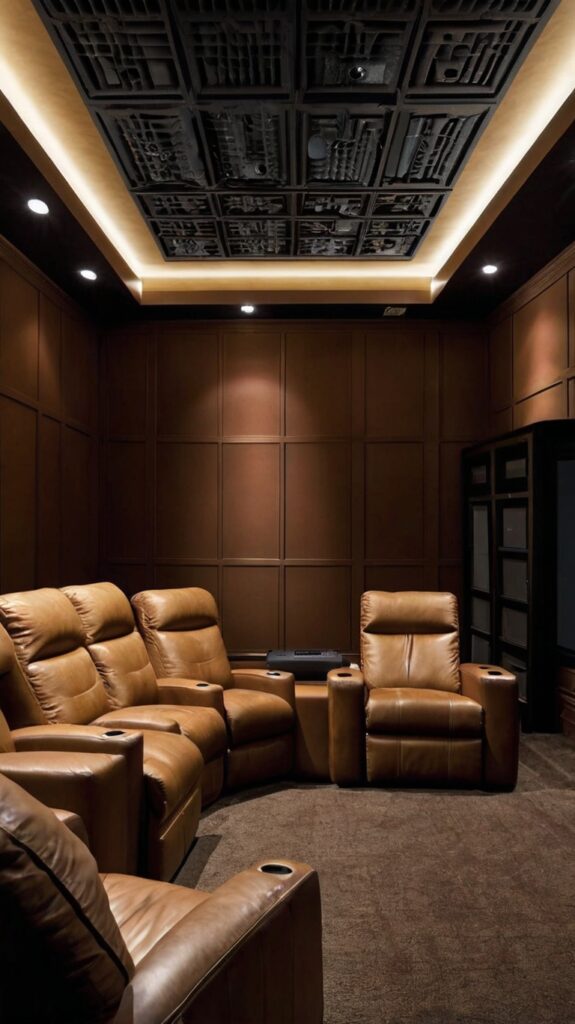
What Are Acoustic Ceilings?
Acoustic ceilings are designed to absorb sound and reduce noise, making them ideal for rooms where sound quality is important, such as home theaters, offices, and bedrooms. They can be made from a variety of materials, including acoustic tiles, panels, and fabrics.
Benefits of Acoustic Ceilings
- Sound Absorption: Acoustic ceilings reduce noise and improve sound quality, making the room more comfortable and functional.
- Aesthetic Appeal: They can be designed to match the room’s decor, adding both functionality and style.
- Flexibility: Acoustic ceilings can be customized with different materials and finishes to suit various design preferences.
Design Ideas
- Material Choices: Choose from a variety of materials, such as acoustic tiles, panels, or fabrics, to match the room’s decor.
- Color and Texture: Use different colors and textures to enhance the ceiling’s visual appeal.
- Lighting: Integrate recessed lights or LED strips to enhance the ceiling’s functionality and visual impact.
Conclusion
Modern ceiling design offers a wide range of options to enhance the aesthetic and functional aspects of your interior space.
From floating and coffered ceilings to exposed beams and geometric patterns, there are countless ways to create a ceiling that not only looks beautiful but also serves practical purposes.
Whether you’re renovating your home or designing a new space, consider the ceiling as an opportunity to elevate your interior decor and create a truly unique and inviting environment.
